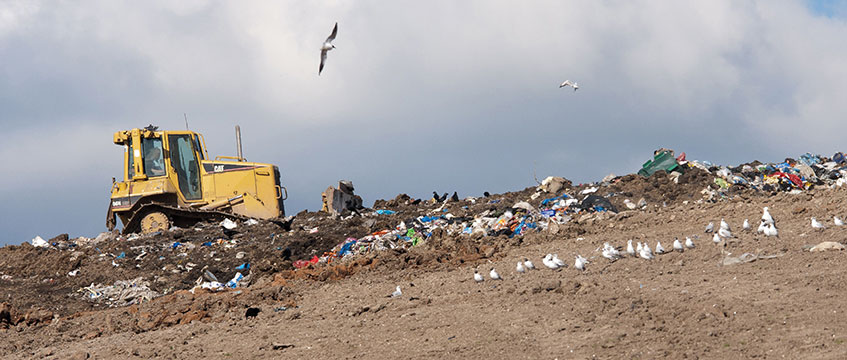Zero waste to landfill is not just an environmental necessity, it is also an opportunity to live sustainably, writes Jill Crawford.
In an era where environmental sustainability is paramount, the concept of zero waste to landfill is gaining traction nationally and globally. This innovative approach to waste management is deemed by many to be crucial in our fight against the increasing waste generation crisis. With the World Bank projecting a rise in global waste to 3.4bn tonnes by 2050, primarily driven by high-income countries, including landfill waste to increase by 70% by 2050 as the global population continues to rise, the urgency for change is clear.
How does zero waste to landfill work?
Zero waste to landfill advocates for a shift in how we view and handle waste. It is about adopting sustainable practices that prioritise waste reduction, reuse and recycling. This approach not only tackles the immediate problem of waste accumulation, but also addresses the broader environmental impacts associated with landfill waste, like pollution and harmful greenhouse gas emission such as methane.
About 570m tonnes of methane gas are emitted every year from both industrial and natural processes, with the concentration of methane in the atmosphere increasing at a record pace, according to the US National Oceanic and Atmospheric Administration.
Landfill sites play a large part in the issue. Less landfill waste means lower greenhouse gas emissions and reduced groundwater contamination. Recycling and reusing materials also reduces the need for new resource extraction, preserving natural habitats and biodiversity. In addition, recycling processes often consume less energy compared to manufacturing from raw materials.
There are also economic benefits of achieving zero waste to landfill, such as job creation through recycling and composting, which are labour intensive activities. Recycling and composting can turn waste into valuable resources providing raw materials for industry and reducing the need for virgin material. By relying less on raw material extraction and more on recycled materials, economies can become more resilient to resource scarcity and price volatility.
The core principles of zero waste to landfill include prevention, reuse, recycling, recovery and, as a last resort, disposal. Prevention is clearly the most effective strategy, aiming to reduce waste generation at source. This can mean anything from redesigning products and packaging to be more environmentally friendly to implementing polices that discourage single-use plastics.
Reuse follows as the second-best option, encouraging the repurposing of products. It is a step that requires minimal energy and does not produce additional emissions. Recycling is the third best option turning waste products into new items, while recovery involves extracting energy from waste that cannot be used or recycled.
What is happening in the UK to achieve zero waste to landfill?
The UK government’s approach is outlined in its The waste prevention programme for England: maximising resources, minimising waste policy paper, published 10 August 2023.
The document focuses on a comprehensive strategy emphasising waste prevention and management. Key elements include promoting sustainable consumption, the redesign of products to minimise waste, encouraging the reuse and recycling of materials and exploring energy recovery from waste. The policy also stresses the importance of public and private sector collaboration in achieving these goals.
However, the policy document has been criticised by some in the waste sector, saying that it contains too much uncertainty and for businesses to act certainty is needed.
While the policy strategy refers to measures such as extended producer responsibility and deposit return schemes, there are many challenges. These include the need for more comprehensive infrastructure, greater investment in waste management technology and ensuring cohesive policies across all regions.
Several technological innovations in the waste management sector are contributing significantly towards zero waste goals already.
Technologies such as pyrolysis and gasification are transforming non-recyclable waste into energy, biofuels and chemicals, thereby reducing landfill dependency.
Smart waste management systems incorporating internet-of-things devices for real-time monitoring of waste levels can optimise collections routes and frequencies, thereby reducing operational costs and environmental impact. Investment in these innovations, along with clearer policy support and public awareness, are crucial for moving towards a zero waste to landfill future.
There have been calls from those in the waste sector for realistic and achievable targets to be set by the UK government, considering factors like hazardous waste definitions and data sources and exploring ways to reduce or eliminate waste through supply chain engagement. While it is agreed by many in the waste sector that zero waste to landfill is vital, some have said it should not be the sole objective, but viewed as a step towards a sustainable circular economy.
The impossible dream?
Despite the many challenges, with some in the waste industry saying that it is impossible to achieve, the benefits of zero waste to landfill are substantial. It can significantly reduce environmental impact, and enhance a company’s sustainability profile. It also aligns with the growing consumer preference for environmentally responsible practices.
In conclusion, the transition to zero waste to landfill is not just a necessity but should be seen as an opportunity to pave the way to a more sustainable future. By reimagining our relationship with waste, we can contribute to a healthier more sustainable environment.
Jill Crawford is a senior associate solicitor at Irwin Mitchell








